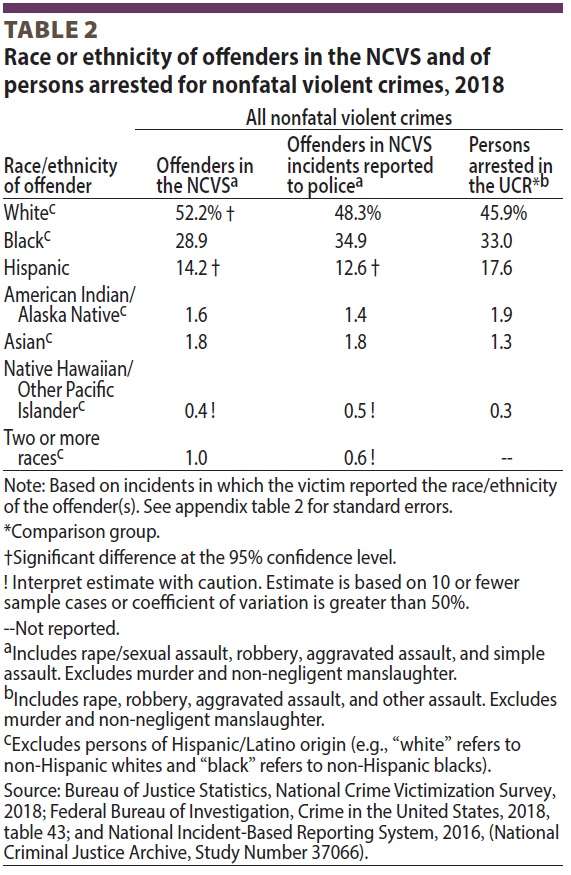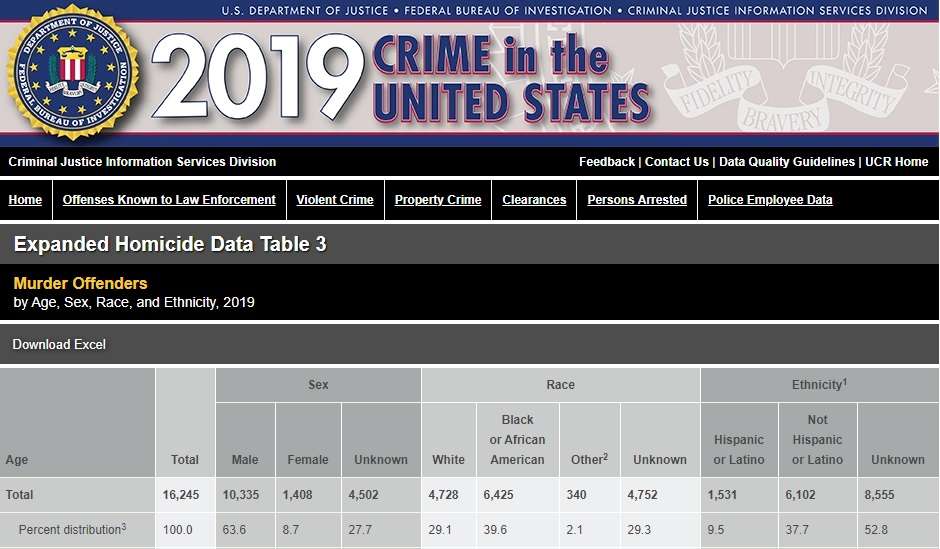An article by a criminal law professor Thursday in the Columbus Dispatch included this assertion:
The reality is that Black-on-Black crime is a myth, and that Black and white people routinely commit crimes at similar rates, but Black people are overwhelmingly targeted for arrest.
Yet I think this is not the reality, at least as to violent crimes of the sort that are usually labeled “black-on-black” when committed by black criminals against black victims. (Blacks and whites do seem to commit drug possession and drug distribution crimes at relatively similar rates, but in this post I focus on violent crimes.) As best we can tell,
- blacks appear to commit violent crimes at a substantially higher rate per capita than do whites;
- there seems to be little aggregate disparity between the rate at which blacks commit violent crimes (especially when one focuses on crimes where the victims say they reported the crimes to the police) and the rate at which blacks are arrested for crimes; and
- the black-on-black crime rate is especially high.
Of course, it’s always hard to measure what the actual crime rate is for any group (whether for purposes of claiming that the rates are similar or that they are different). Still, the most reliable data, to my knowledge, is generally the National Crime Victimization Survey, and the U.S. Justice Department Bureau of Justice Statistics reports that are based on that survey. Indeed, the link in the quoted sentence from the article goes to a source that relies on such data.
Because the NCVS surveys a large group of people about their experiences with crime victimization, it is not based on what is reported to the police and what the police do with it. (The Uniform Crime Reports is based on data from police departments, and is thus generally a less reliable measure of actual crime.) Naturally, there are possible sources of bias in victim reports. But the NCVS seems to be the best data we have, and I know of no better source that yields other results. (If you do know, please let me know.)
Here, then, is the data from the Bureau of Justice Statistics’ Race and Ethnicity of Violent Crime Offenders and Arrestees, 2018, with regard to “rape/sexual assault, robbery, aggravated assault, and simple assault“:

And here is the data for serious nonfatal violent crimes, which excludes simple assaults, and thus focuses on “rape/sexual assault, robbery, and aggravated assault”:

Blacks, which here means non-Hispanic blacks, were 12.5% of the U.S. population, and non-Hispanic whites were 60.4%. It thus appears from this data that the black per capita violent crime rate is roughly 2.3 to 2.8 times the rate for the country as a whole, while the white per capita violent crime rate is roughly 0.7 to 0.9 times the rate for the country as a whole.
It also appears that the arrest rates for violent crime are roughly comparable to the rates of offending, especially if one takes into account those offenses reported to the police (which is a choice of the victims, not of police departments). And the great bulk of such violent crime is intraracial.
The disparity is even more striking for murder and nonnegligent manslaughter, which the NCVS doesn’t measure (since the crime victim can’t respond to the survey), and which thus relies on the police department reports in the UCR:
When the race of the offender was known, 55.9 percent were Black or African American, 41.1 percent were White, and 3.0 percent were of other races.
Here is the more specific data:

Many homicides are unsolved, and of course there is the risk of race-based investigation and enforcement. But again this is the best data we have, and it’s consistent with victim demographics—it’s clear that blacks are disproportionately likely to be murder victims—and the broadly accepted view that the overwhelming majority of homicide is intraracial.
Now naturally this reflects just aggregate statistics; the great majority of people in all racial groups don’t commit violent crimes, and even the aggregate data may differ from place to place. Moreover, this doesn’t tell us about property crimes (other than robbery, which is classified as a violent crime), because it’s so hard to approximate the true rates of offense commission there: Most such property crimes are unwitnessed, so it’s hard to gather survey data. And again, I’d love to hear any other data that might shed a different light on the violent crime statistics as well.
Still, the best data that I know of suggests that
- black-on-black violent crime is not a myth;
- blacks and whites generally commit violent crimes at substantially disparate rates (and, for homicides, sharply disparate rates); and
- as best we can tell, the disparity in arrest rates for violent crimes is pretty close to the disparity in crimes that are committed, and especially crimes that the victims report to the police.
from Latest – Reason.com https://ift.tt/3dN0Ugn
via IFTTT